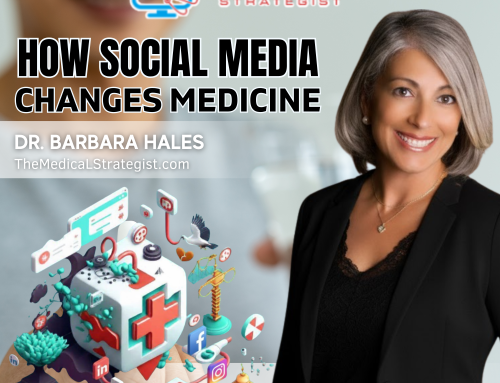An article appeared in Medical Economics October 4, 2024 submitted by Will O’Connor, MD, the CMIO of TigerConnect.
Excerpts of this article are shown here as I feel so strongly about this. Titled “Priorities are shifting – patients want stronger connections with their care providers”, he emphasizes how the relationship between patients and their physicians lays the basis for the medical care experience. This is something that most patients can attest to.
The Edelman Trust Barometer Special Report, points out that trust is a top determinant of positive health behaviors and outcomes.
The 2024 National Consumer Survey on Access & Choice from Jarrard Inc. reveals two key shifts in patient priorities:
- Trust drives satisfaction and retention – significantly when the doctor listens to patient concerns, ranked as the most important among surveyed patients and shows that their thoughts and feelings are validated.
- Patients equate experience with quality – In response to the prompt ‘I know I am receiving quality care when…,’ the top answer from those surveyed was, ‘The doctor listens to my concerns’ which again goes to the perception that they are being validated by their doctor.
This highlights the fact that when patients are rushed through their care for the sake of the schedule, it is benefiting no one. It is also a reflection of the importance for a private practice option so that relationships can be built and maintained rather than sending people to clinics and urgicenters (which do play their own role and which can be addressed with telehealth)
Patient-provider communication
Despite significant advancements in medical technology, health care continues to see a substantial communication gap between patients and providers, negatively impacting patient outcomes and eroding the trust that patients place in their health care providers.
An estimated 125,000 lives are lost annually due to medication non-adherence, often driven by misunderstanding and confusion around care plans. Additionally, an estimated 10% of hospitalizations in older patients are considered avoidable through improved medication adherence. Traditional communication methods among care teams and patients often fragmented, including long games of phone-tag and indirect communication through online portals. The disjointed process can delay the exchange and relay of information to providers, increasing the risk of dangerous errors in a patient’s care plan. The urgency to address these communication challenges is apparent.
Modern, mobile-friendly communication platforms bring a promising solution to the table, allowing for direct communication between patients, their doctors, and care staff – improving connection, building trust, and reducing the burden on health care staff.
The existing communication gap
When seeking care, patients want transparent and immediate answers from their providers. Without this, there is a lack of communication exchange with subsequent lack of trust.
Secure clinical communication platforms are designed to close this gap by encouraging real-time communication between patients and their doctors. These platforms allow patients to engage with their providers through SMS, secure text messaging, and even video appointments, providing them with a direct line to ask care questions, clarify instructions, and stay informed about the next steps in their care journey. A higher level of access improves the patient’s understanding of their treatment plan, but it also provides a deeper sense of care and trust in their provider.
Building patient trust through better outcomes
When patients feel like they’re actually being heard and understood, they are more likely to trust their providers and adhere to prescribed treatment plans. This trust is particularly important in managing chronic conditions or post-op care, where ongoing updates on health status are essential to achieving positive outcomes.
Modern, HIPAA-compliant communication platforms are helping build stronger relationships between patients and care teams through the delivery of consistent and clear communication from start to finish of the care journey. Providers can send automated reminders for follow-up appointments, deliver post-care instructions, and check in with patients, family members and caregivers after their visits to make sure they are on track with their recovery. Having regular touch points improves patient outcomes and reduces the likelihood of disruptions in care continuity.
Reducing care team burden
In addition to creating a more personal experience for patients, clinical communication platforms significantly reduce the administrative burdens health care staff encounter with outdated methods. Administrative tasks, such as managing appointment schedules, tracking down on-call providers and retrieving clinical information often consume a large portion of care team time. This administrative workload can detract from the time spent on direct patient care, contributing to burnout and reducing overall efficiency.
Text-based platforms simplify these processes by automating many routine tasks. For example, these platforms can automatically integrate with schedules, making it easy for care teams to find and contact on-call providers. Capabilities like automated routing of critical health information or lab results to the right provider lead to more efficient and effective patient care.
Additionally, by facilitating real-time communication and minimizing the need for manual handoffs, these platforms help cut down on errors and miscommunications that can increase healthcare staff workload and stress. The result is a more efficient workflow, allowing providers to focus more on delivering the high-quality care essential for building and maintaining high patient trust and connection.
Cultivating a trust-centered future today
As health care providers strive to meet the shifting demands and expectations of modern care, embracing new strategies for patient engagement will be crucial. Clinical communication and collaboration platforms provide the means to deliver the efficient, high-value and empathetic care patients want and deserve.
An additional way that communication can be accomplished with time constraints is to have an FAQ sheet on the physician website that addresses the most commonly asked questions and the answers to them as well as information sheets dealing with various ailments, pre and post op care, and instructions on how to reach the physician staff.
This is in keeping with my mission to help stabilize private practices and keep them surviving as a viable option for medical care.
If you are a physician in private practice and would like to discuss how you can improve patient relations, thereby helping them with their care and your rankings and reviews, reach out for a free consultation at TheMedicalStrategist.com/contact




